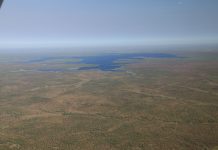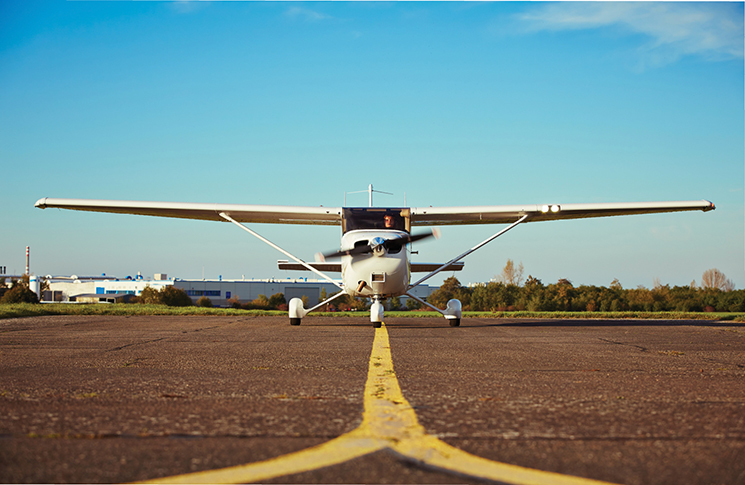The Australian Transport Safety Bureau is taking on one of the most persistent killers in general aviation: VFR flight into IMC.
When visual flight rules pilots encounter instrument meteorological conditions, with little or no outside visibility they on average fly for 178 seconds, before losing control and crashing, a simulator study found.
The ATSB has launched a new safety promotion campaign titled ‘Don’t push it, don’t go. Know your limits before flight’.
ATSB chief commissioner Greg Hood said the campaign highlighted three key messages:
- the importance of thorough pre-flight planning and having alternate plans,
- that pressing on where there is the possibility of entering IMC carries a significant risk of spatial disorientation, and,
- the value of using a ‘personal minimums’ checklist to help manage flight risks.
ATSB records show 101 occurrences of VFR pilots inadvertently flying into IMC in Australian airspace in the ten years from 1 July 2009 to 30 June 2019. Nine of these occurrences resulted in accidents, resulting in 21 deaths.
ATSB director transport safety Stuart Godley said developing a personal minimums checklist was an effective defence against what pilots often term as ‘push-on-itis’ or ‘get-home-itis’.
‘Discuss your personal minimums with an instructor or a more experienced pilot. Have the discipline to stick to your personal minimums in spite of external pressures. And treat your personal minimums as a line in the sand over which you would not cross,’ Godley said.
Flight Safety Australia highlights the theme of ‘get-home-itis’ in a story in the spring print edition, currently being printed for distribution next month (which will also be published later online). Author Tom Turner said the story was based on a recent personal flying experience which sobered and unsettled him by demonstrating how insidious mental biases could be. Despite his safety advocacy and piloting experience, Turner found himself rationalising during a flight plan that if he flew into icing conditions he could ‘just turn around’.
‘When I heard myself actually say that, out loud, I stopped then and there. I just re-learned I am just as susceptible to temptation and ‘get home-it is’ as a newly minted private pilot. We all are,’ he said.
As part of the campaign, the ATSB has updated its report Accidents involving visual flight rules pilots in instrument meteorological conditions. Pilots can also request a printed copy by emailing atsbinfo@atsb.gov.au





VFR pilots entering cloud and looking outside is normally disastrous. Best to concentrate on your instruments with absolutely minimum control inputs. If the plane is trimmed correctly it can fly happily for quite some time, .hopefully allowing you to figure some sort of rational plan.
It would be simple for trainee pilots, either just about to get their PPL or just afterwards, to go up with their instructor using the hood over the combing so they could try flying on instruments and learn first hand how difficult it can be.
I did some time in a Link trainer at school before starting flying training, and it was a good introduction, and made me aware of what can happen in real life.
If the Atsb continue to pedal the same message without no change in outcome, there is little chance of improvement. Looking at the statistics above, 101 occurrences less the 9 accidents = 92 Imc encounters with a successful outcome. It is these successful outcomes that further embolden pilots to try again. A ‘personal minimums checklist’ isn’t going to change their way of thinking. The Atsb campaign while well intentioned, reeks of an office dwellers theoretical approach to practical problem & will likely be dismissed by those who require an attitudinal shift.
And 101 reported occurrences is quite likely well over 1000 actual occurrences. It just means these guys got caught.
Well said and very true. The amount of VFR drivers out there that have broken the VFR criteria & continue to do so would be staggering! No amount of feel good articles will change the minds of those lining themselves up for the next ‘crash comic’ spiral dive death!
What happened to “Recovery from unusual attitudes” with an instructor during PPL training? It’s many years since I had a PPL but this was part of the training and reviews.
Rocky aug 31 2019 6-40 am after reading the comments i have to agree with walter and harry. vfr into imc 9 times out of 10 usually ends in disaster. The instrument training during the ppl course usually 2 to 3 hrs is soon forgotten or never practised so a complete waste of time and money.. IT is only an introduction to instrument flying, and most vfr pilots never do, or havn,t the money to do a CIR, and why would we undertake such a costley rating with the great flying weather in this country..and thats where the problem lies, we dont need an instrument rating, so the trend will probably continue , VFR pilots engulfed in cloud with no way out. But their is a simple solution , and i cannot understand why it wasn,t made mandetry in all light aircraft way back, would have saved many lives. i,m refuring to the humble Auto Pilot even a simple wing leveller., wot do u think !
Rocky a basic AP sure would ‘save’ the day BUT having such a requirement (never gunna happen anyway) gives those that are prolific rule breakers (of which there would be zillions!) even a better excuse to break the law. As most IFR drivers know there’s more to flying in IMC than just keeping the wings level. I’ve seen experienced Jet drivers really work hard in genuine IMC hand flying, that’s scary!:-)
There have been inappropriate comments on this story, which, with regret, we have had to remove.
Free speech is an important principle, but freedom of speech does not mean a licence to harass, defame or insult. Words have consequences. Disagreement will happen from time to time, sometimes for sound reasons, but it must be expressed with respect, for other people, and for the complexity of the issue.
Everyone is free to speak but should be aware that they are rarely in possession of all the facts. And the purpose of having a comments section is for readers to offer useful, constructive advice.
Everyone, please remind yourselves of the following undertakings, which you signed up to when you registered to comment on this blog.
• Do not post comments that could be considered prejudicial, racist, off-topic, inflammatory, repetitive, vexatious, offensive or otherwise inappropriate.
• Do not swear or use offensive language.
• Be respectful of others and their opinions. Don’t harass or make personal attacks against other users.
• Do not post other people’s appeals, requests or offers, or anything else that could be considered spam.
• Do not link to other websites, including any non-government or off-topic pages.
Persistent offenders against these principles will be banned from commenting on Flight Safety Australia.
Further information: https://www.flightsafetyaustralia.com/terms-of-use/